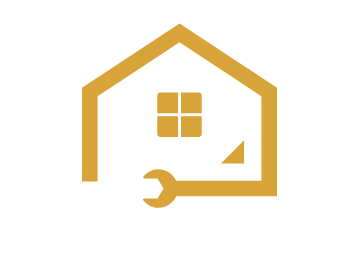5 Kitchen Remodeling Mistakes to Avoid
5 Kitchen Remodeling Mistakes to Avoid Smart Fireplace Surround Materials for Seattle’s Climate Kitchen Remodeling Mistakes can sink timelines, inflate budgets, and leave you with a space that looks good but cooks poorly. The biggest missteps usually start in planning: forcing an island where aisles need 36–42 inches, skipping dedicated task zones (prep, cook, clean), or choosing finishes that can’t handle steam, splashes, and daily traffic. Homeowners in Kitchen Remodeling Seattle projects also run into permit delays, lead times on appliances and custom cabinetry, and underpowered electrical plans that miss code-required GFCI/AFCI protection and the circuits modern kitchens need. Lighting is another trap—pretty pendants without layered task and under-cabinet lighting make shadows where you chop and plate. Finally, budgets go sideways without a 10–15% contingency and early selections (appliances, sink, hood) that drive cabinet and ventilation specs. This guide breaks down the most common kitchen design errors, kitchen layout mistakes, and kitchen renovation budget mistakes so your remodel looks sharp, cooks efficiently, and stands up to everyday life. Budgeting for Cabinets But Not for Contingencies When tackling Kitchen Remodeling Mistakes, the biggest budget-buster is a layout that ignores movement paths and clearances. Keep the “core” (sink, cooktop, fridge) tight enough for efficiency but spacious enough to avoid collisions. Aisle widths: Plan ≈42″ for one cook and 48″ for two between counter/appliance faces so doors can open and people can pass safely. Work zones: Modern kitchens organize around zones (prep, cook, clean, storage). Keep each zone contiguous—e.g., knives, cutting space, trash, and sink all within a step for prep. Island reality check: Only add an island if you still maintain the clear aisle widths. Undersized aisles create door conflicts and traffic jams. Landing space: Leave set-down areas beside the fridge, oven and cooktop so hot pans or groceries don’t end up on the floor. One solid planning reference: NKBA Kitchen Planning Guidelines (aisle widths, landings, access standards). media.nkba.org Quick Tip: Tape your planned cabinet/appliance outlines on the floor and walk the paths with doors “open” (use cardboard). If any aisle is <42″ (48″ for two cooks), revise before you order. 2. Don’t Force the Island—Protect Flow & Family Space Pick the Right FootprintIslands are great—until doors clash and people can’t pass. Keep the “family lane” open so kids, pets, and a busy cook can move without collisions. Clearances & SeatingMaintain ≈42″ aisles for one cook, 48″ for two between counters/appliances; add room behind seated stools so walkways still work during dinner rush. These are gold standards from the NKBA. See guideline summary: NKBA Kitchen Planning. NKBA Media Smart AlternativesIf space is tight, choose a peninsula, a narrow worktable (≤24″), or a mobile cart. You’ll keep prep surface without choking traffic or blocking appliance doors. Why it matters: Right-sized islands stop door conflicts, improve safety, and make the kitchen feel calm and connected exactly what you want in a busy Seattle home. 3. Don’t Underpower the Kitchen—Plan Circuits & Outlets Early Power the PlanModern kitchens need dedicated power for induction, dishwashers, microwaves, and disposals—plus small appliances that live on the counter. Circuits & ProtectionPlan at least two 20-amp small-appliance circuits for countertops, with GFCI/AFCI protection where required. Place receptacles so there’s always one within reach along counters. Good overview: Residential Electrical Code—Kitchens. The Home Depot Outlet PlacementAdd extra outlets at coffee stations and mixers; include USB/USB-C inside a drawer. Pre-plan for under-cabinet lighting transformers and a future smart range hood. Why it matters:Enough clean, code-compliant power prevents nuisance trips, reduces extension-cord clutter, and keeps your remodel inspection-ready—and future-proof. Get A Free Quote 4. Don’t Rely on Pretty Fixtures Plan Task-First Lighting Layer the LightStart with ambient (ceiling cans or a low-glare flush mount), then add under-cabinet task lighting for counters, and a soft accent (toe-kick or shelf) for depth. This keeps prep zones bright without hotspots. Color & ClarityAim for neutral-white LEDs around 3000–4000K with CRI 90+ so food and finishes look true. Keep pendants dimmable to shift from cooking to dining. Undercabinet Done RightPlace linear bars toward the cabinet front to wash the counter, hide diodes, and reduce shadows from uppers. Hardwire where possible for a clean look and consistent brightness. ControlsPut task lights on a separate switch or smart dimmer. Pre-plan transformer locations for tape/bar systems so you’re not stuck with visible cords. Why it matters:Good kitchen lighting is about visibility, not just vibes—layered, neutral-white illumination reduces eye strain, sharpens knife work, and makes small layouts feel larger. Reference: ENERGY STAR’s guidance on efficient, low-glare under-cabinet LEDs. ENERGY STAR 5. Don’t Wing the Budget—Lock Specs & Add a Contingency Prioritize the Big WinsBudget for layout fixes first (proper aisle widths), then cabinets, counters, and appliances. Leave “nice-to-haves” (pot filler, glass uppers) as add-alternates so overruns don’t derail essentials. Control Scope CreepChoose appliances, sink, faucet, and ventilation before cabinet drawings—these drive cabinet sizes, electrical, and ducting. Lock finish SKUs early to avoid price jumps and backorders. Contingency & TimelineCarry 10–15% contingency for hidden conditions and lead-time surprises. Sequence: demo → rough-ins → cabinets → counters → tile → fixtures → paint/caulk; order long-lead items at the start. Why it matters:A disciplined plan protects your wallet and schedule. Historical data shows “minor” kitchens often recover more value than major overhauls—optimize where it counts and avoid overspend. Source: Zonda’s Cost vs. Value report overview. zondahome.com+1 Choose Creative Builders for a Mistake-Free Kitchen Remodel By following this checklist, you’ll avoid the biggest Kitchen Remodeling Mistakes and keep your Seattle project on time, on budget, and inspection-ready: Layout & Flow: Protect aisles (≈42″ one cook / 48″ two cooks), plan true work zones, and check door swings to prevent Kitchen Layout Mistakes that choke circulation. Power, Venting & Code: Specify two 20A small-appliance circuits with GFCI/AFCI, size range/hood ventilation correctly, and pre-plan dedicated circuits—common Kitchen Design Errors eliminated. Lighting & Storage: Layer ambient + task + under-cabinet lighting, add roll-outs, pantry towers, and corner solutions so function matches the finish. Budget & Timeline: Lock appliances/fixtures early, carry a 10–15% contingency, and order long-lead items

